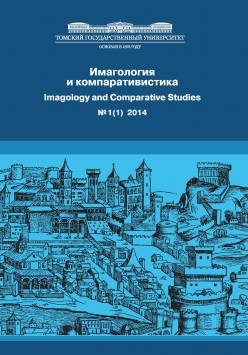Alter ego as an object of imagology: the narrative structure of Letters of a Russian Traveler by N.M. Karamzin in the light of the national narrative tradition
Karamzin's central work of the 1790s Letters of a Russian Traveler does not lack literary critics' attention. However, the narrative structure of Karamzin's text is still one of the most attractive objects for researchers in regard to the problem of the combination of the objective and subjective narrative layers in his narrative. Due to the synthetic reception of different traditions of European travel literature, Letters clearly shows structural universal-ism of Karamzin's genre variant of travel notes. The combination of the traditions of sensitive, geographical and philosophical-journalistic travel genre variants contributed to the organic synthesis of the objective (descriptive and essay-type) and subjective (emotional, analytical and ideological) aspects of the story. The combination in the text structure of the two forms of narration in the first person, epistolary and travel notes, doubled and, thus, sharply accentuated the personal character of the narrative. Starting from the earliest tales of Russian travelers of modern times, the Russian narrative tradition of the 18th century clearly focused on the accentuation of the subjective beginning of a travelogue in its attention to the personality of the hero that subordinated all the empirical material of a travel and became the central aesthetic text category that defined the plot and composition in every genre modification of early Russian epic and lyrical epic. This trend was reflected in the absolute predominance of forms of narration in the first person (epistolary, travel notes, document imitation) that define the genre originality of the early Russian novel. Early Russian epistolary and an autobiographical novel attributed the author's narrative function to the character, thus equating the character's creative rights with the author's, which reduced the explicitly author's narrative elements of the text and made once declarative expression of the author's position an indirect artistic and imagery overtone. The parallel process of a compensatory nature (the parity of the image statuses between the author's and character's personalities, finding the author's own space in the text) developed in a lyrical epic poem, which equalized the author with the hero and attributed the author's function to the character thus entitling the author to model his own artistic image, just like he does it with the image of the character. Although it is, apparently, A. Radishchev's Journey from St. Petersburg to Moscow that demonstrates most of these typological narrative features of the Russian epic and lyrical epic of the end of the 18th century. If one now looks at the narrative structure of Letters of a Russian Traveler from the standpoint of the above narrative methods, the poetics of Letters shows two elements fundamentally important for the aesthetics of the work. First, it is the structure of the narrative, the same model as Radischev's three-component narrative: objective and essay-type, emotional and expressive, and analytical journalistic layers of the worldview in their interconnected-ness recreate the sensual model of cognition. Second, it is features of the purely artistic structure of the text, fully determined by subjective centralization of the narrative which produces, however, an impression of subordination to the objective descriptive aim. The narrator's thoughts about his cultural and aesthetic preferences preceding objective descriptions are evidence that, in selection of facts of reality, Karamzin, the author of Letters, was guided by an emotional motion of the sensitive soul directing the attention of the traveler on a particular object. Thus, the objective, descriptive, imagological layer of Karamzin's narrative apparently orients at a foreign mentality's reality, as if aiming to create its textual equivalent. In its second aesthetic aspect the layer shows an anthropological component: the reality of the world becomes an auto-descriptive concept to some extent; through the essay image of a foreign mentality's reality the narrator creates a kind of a "landscape of the soul" vibrating on the border of the concepts "own" - "alien". The degree to which "own" is alienated shows how Karamzin's narrative acquires the imagological character of describing "own" and "alien".
Keywords
Н.М. Карамзин, А.Н. Радищев, русский роман и лиро-эпосXVIII в, травелог, нарратив, объектно-субъектная структура текста, объект имагологического описания, N.M. Karamzin, A.N. Radishchev, Russian novel and lyric-epic of the 18th century, travelogue, narrative, object-subject structure of text, object of imagology descriptionAuthors
| Name | Organization | |
| Lebedeva Olga B. | Tomsk State University | obl25@yandex.ru |
References

Alter ego as an object of imagology: the narrative structure of Letters of a Russian Traveler by N.M. Karamzin in the light of the national narrative tradition | Imagologiya i komparativistika – Imagology and Comparative Studies. 2015. № 1 (3).